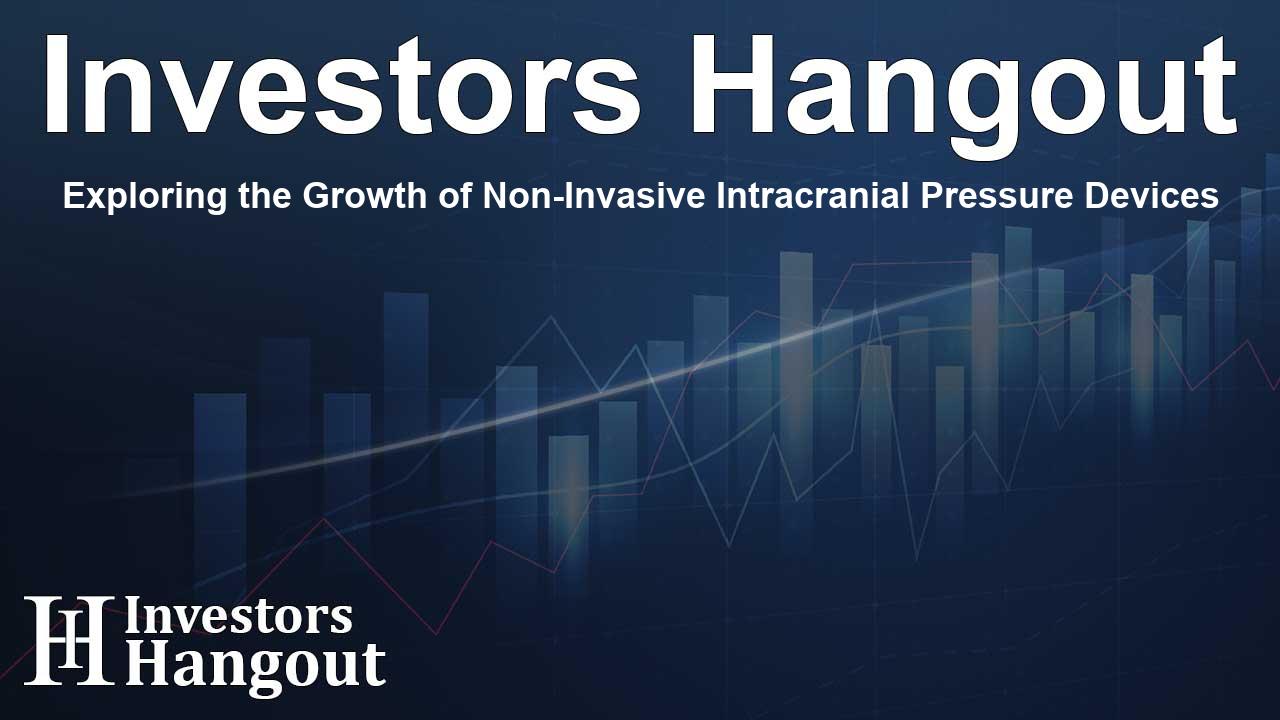Exploring the Growth of Non-Invasive Intracranial Pressure Devices

Market Growth in Non-Invasive Intracranial Pressure Monitoring Devices
The global market for non-invasive intracranial pressure (ICP) monitoring devices is on the rise, projected to experience significant growth as awareness and technological innovations expand. This growth is estimated to reach a substantial USD 126.1 million from 2025 to 2029 as healthcare professionals and patients increasingly recognize the importance of non-invasive monitoring techniques.
Importance of Awareness and Technology
One driving force behind this market evolution is the increasing awareness of neurological disorders, including traumatic brain injuries, hydrocephalus, and aneurysms. These conditions necessitate continuous monitoring of ICP for effective patient care. Non-invasive ICP monitoring devices offer a solution that mitigates the risks associated with traditional invasive procedures.
Key Trends in Market Growth
The adoption of non-invasive devices, including Transcranial Doppler ultrasonography and MRI/CT, is on the rise due to their patient-friendly design and ability to provide real-time monitoring. These advancements empower healthcare providers to make informed treatment decisions promptly.
Innovations in Medical Technology
As non-invasive ICP monitoring devices gain traction, technological innovations remain at the forefront. The integration of artificial intelligence (AI) and machine learning (ML) enhances the capabilities of these devices, providing predictive insights that facilitate earlier interventions and improve patient outcomes.
Market Challenges
Despite the promising growth, the market faces challenges, particularly from traditional invasive ICP monitoring methods. Many healthcare providers are accustomed to established procedures, which can hinder the acceptance of newer technologies. Addressing these barriers through educational initiatives is essential to facilitate a smoother transition to non-invasive techniques.
Insights from Recent Developments
Governments in developed nations are increasingly funding the research and development of non-invasive devices, highlighting their potential benefits. For instance, innovative products like AKUUGO suspension, which gained conditional marketing approval recently, represents a significant breakthrough in non-invasive techniques for treating chronic motor paralysis following traumatic brain injuries.
This shift indicates an ever-growing importance of non-invasive ICP monitoring devices in contemporary healthcare frameworks.
Applications and Market Segmentation
The non-invasive ICP monitoring market is strategically segmented by application, including traumatic brain injury, intracerebral hemorrhage, and meningitis. Geography also plays a significant role in shaping market dynamics, dividing key markets across multiple regions, including North America, Europe, and Asia. This dynamic landscape calls for tailored strategies to address the unique needs of each geographical market.
Future Projections and Market Opportunities
The future looks promising for non-invasive ICP monitoring devices. As demand for early diagnosis and accurate monitoring of neurological conditions surges, market players are poised to innovate further, expanding their offerings and enhancing existing technologies. This creates numerous growth opportunities, prompting companies to invest in R&D and collaboration with healthcare institutions.
Conclusion
The non-invasive ICP monitoring devices market is on the brink of transformation driven by a confluence of awareness, technology, and patient needs. With a growing emphasis on non-invasive monitoring solutions, the landscape is set for continued expansion, reshaping how neurological disorders are managed and treated.
Frequently Asked Questions
What are non-invasive intracranial pressure monitoring devices?
These devices measure intracranial pressure without invasive procedures, using techniques like ultrasound and MRI.
What is driving the growth of this market?
Growing awareness of neurological conditions and technological advancements like AI and ML are key growth drivers.
What challenges does this market face?
The main challenges are the established practices surrounding traditional invasive methods and the need for more educational outreach.
How do these devices benefit patients?
They minimize risks and discomfort while providing real-time monitoring, leading to better patient management.
What are future market trends for non-invasive ICP monitoring?
Increased demand for accurate monitoring solutions and technological integrations are expected to shape future trends in this space.
About Investors Hangout
Investors Hangout is a leading online stock forum for financial discussion and learning, offering a wide range of free tools and resources. It draws in traders of all levels, who exchange market knowledge, investigate trading tactics, and keep an eye on industry developments in real time. Featuring financial articles, stock message boards, quotes, charts, company profiles, and live news updates. Through cooperative learning and a wealth of informational resources, it helps users from novices creating their first portfolios to experts honing their techniques. Join Investors Hangout today: https://investorshangout.com/
Disclaimer: The content of this article is solely for general informational purposes only; it does not represent legal, financial, or investment advice. Investors Hangout does not offer financial advice; the author is not a licensed financial advisor. Consult a qualified advisor before making any financial or investment decisions based on this article. The author's interpretation of publicly available data shapes the opinions presented here; as a result, they should not be taken as advice to purchase, sell, or hold any securities mentioned or any other investments. The author does not guarantee the accuracy, completeness, or timeliness of any material, providing it "as is." Information and market conditions may change; past performance is not indicative of future outcomes. If any of the material offered here is inaccurate, please contact us for corrections.